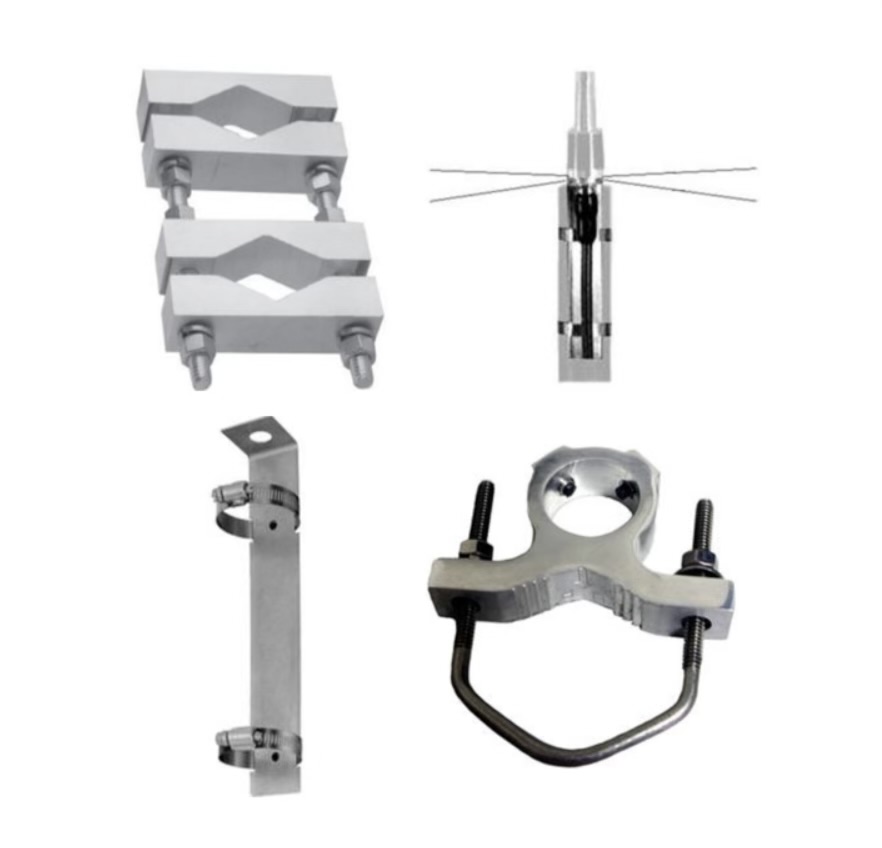Antenna Mounts & Accessories

RSP Supply carries a full line of antenna mounts and accessories designed for secure and durable installation of antennas across industrial, commercial, and vehicular applications. Built from corrosion-resistant materials such as stainless steel, these mounting solutions provide long-lasting stability in harsh weather and demanding environments.
Antenna mounts are available in a variety of configurations to suit different surfaces, including roofs, walls, and vehicles. Precision-engineered brackets, clamps, and bolts ensure that antennas remain securely fastened, even in high-vibration or high-wind conditions. Whether used on industrial buildings, service vehicles, or remote communication towers, these mounts maintain signal integrity by preventing movement and ensuring proper antenna alignment. Heavy-duty mounting systems also include adjustable designs for directional antennas, allowing for fine-tuned signal positioning. Accessories such as grounding kits, cable clamps, and adapter plates help streamline installation and provide additional stability. The result is a complete, reliable mounting solution that supports both fixed and mobile communication systems.
More Information about Antenna Mounts
Choosing a mount for an antenna requires consideration of the application for which the antenna has been chosen, the type of antenna itself, and the location where the antenna will be mounted. You can find simple mounts with a single hole for basic installations and need-them-now convenience. You can also find complex brackets made for heavy-duty applications, conditions that require a mount working in multiple planes, and setups involving several antennas. Why aren't all mounts made like these? Because the stiff mounts found in setups for several antennas often aren't needed—and shouldn't be needed—for setups involving a single antenna. For applications involving vehicles—such as trucks and RVs—specialized antenna mounts known as NMO (New Motorola) mounts are favored. The reason for this is simple: The NMO mount is versatile beyond imagination, and it is downright easy to use.
FAQs
What is the best type of antenna mount for getting the strongest signal?
The best antenna mount for maximum signal strength is one that provides a clear line of sight, minimal vibration, and stable elevation such as pole mounts or mast mounts. These mounts reduce interference and allow antennas to be positioned at optimal height and direction for wireless, cellular, and radio applications.
How do I choose the right antenna mount for my installation?
Choosing the right antenna mount depends on antenna size, weight, installation location, wind exposure, and whether the antenna is directional or omnidirectional. The correct mount should support rigid stability, allow precise alignment, and withstand outdoor conditions to maintain long-term performance.
Do antenna mounts need grounding or surge protection?
Yes. Outdoor antenna mounts should always be grounded to prevent lightning damage and static buildup. Grounding kits, bonding straps, and lightning arrestors protect networking equipment and help meet industry safety standards for wireless and RF installations.
Are outdoor antenna mounts weatherproof and durable?
Most industrial antenna mounts are built from galvanized steel, aluminum, or UV-resistant materials to withstand rain, heat, freezing temperatures, and high winds. Weather-rated mounting hardware ensures long-term reliability for rooftop, tower, and pole installations.
What accessories improve antenna installation and signal performance?
Common performance-boosting accessories include extension arms, adjustable brackets, mast clamps, grounding kits, surge protectors, cable weatherproofing boots, and mounting plates. These components stabilize the antenna, maintain alignment, and protect equipment for stronger and more consistent signal transmission.
Why Buy Antenna Mounts from RSP Supply
RSP Supply provides durable, high-quality antenna mounts and accessories designed for industrial reliability. Our products ensure secure installation, long service life, and superior performance for any communication system.

